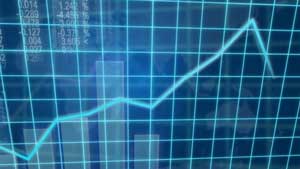How Neo-Fisherism Differs from Conventional Central Banking Wisdom

Today’s post is the second of a three-part series on Neo-Fisherism as an alternative solution to the low-inflation problem.
Yesterday’s blog post discussed the conventional central banking wisdom regarding inflation control. Namely, raising the nominal interest rate target should lead to lower inflation and cutting the nominal interest rate target should lead to higher inflation. This post discusses Neo-Fisherian ideas, which suggest the opposite would hold.
In an article in The Regional Economist, Vice President and Economist Stephen Williamson wrote: “Neo-Fisherism says … that if the central bank wants inflation to go up, it should increase its nominal interest rate target, rather than decrease it, as conventional central banking wisdom would dictate. If the central bank wants inflation to go down, then it should decrease the nominal interest rate target.”
The Fisher Effect
Williamson discussed a key component of essentially all macroeconomic models: A positive relationship exists between the nominal interest rate targeted by a central bank and inflation. This so-called Fisher effect is named for the early 20th century American economist Irving Fisher.
While this relationship is typically interpreted as involving causation running from inflation to the nominal interest rate, Williamson wrote, “what if we turn this idea on its head, and we think of the causation running from the nominal interest rate targeted by the central bank to inflation? This, basically, is what Neo-Fisherism is all about.”
Williamson described a simple equation whereby the nominal interest rate R is expressed as the sum of the real (inflation-adjusted) interest rate r and future inflation π. That is, R = r + π.
He noted that mainstream macroeconomic models tend to predict the following response of the economy to a permanent, unanticipated increase in the nominal interest rate:
- The real interest rate rises on impact (one-for-one initially).
- Over time, the inflation rate increases gradually and the real interest rate falls.
- In the long run, the inflation rate increases by the same amount as the nominal interest rate, and the real interest rate returns to its equilibrium rate.
(See Figure 2 in the article, “Neo-Fisherism: A Radical Idea, or the Most Obvious Solution to the Low-Inflation Problem?”)
The Taylor Principle
Williamson posed the question of what could go wrong if central bankers do not recognize the importance of the Fisher effect in formulating monetary policy and they instead conform to conventional central banking wisdom.
He noted that conventional wisdom is embodied in the Taylor rule, which was proposed by economist John Taylor.1 “Taylor appears to have thought, in line with conventional central banking wisdom, that increasing the nominal interest rate will make the inflation rate go down, not up,” Williamson said. In particular, the so-called Taylor principle calls for the nominal interest rate to increase more than one-for-one with an increase in the inflation rate.
Consequently, if the inflationary process works as described above but a central bank follows the Taylor principle, Williamson said that macroeconomic theory predicts the central banker would almost inevitably arrive at the zero lower bound on nominal interest rates.
“Neo-Fisherian denial will tend to produce inflation lower than central banks’ inflation targets and nominal interest rates that are at central banks’ effective lower bounds—the low-inflation policy trap,” he wrote.
The final blog post in this series will discuss the low-inflation policy trap and how central banks typically respond in such a situation.
Notes and References
1 Taylor, John. “Discretion versus Policy Rules in Practice.” Carnegie-Rochester Series on Public Policy, 1993, Vol. 39, pp. 195-214.
Additional Resources
- Regional Economist: Neo-Fisherism: A Radical Idea, or the Most Obvious Solution to the Low-Inflation Problem?
- On the Economy: The Fed, Interest Rates and Monetary Policy
- On the Economy: What Will Inflation Be over the Next Year?
Citation
ldquoHow Neo-Fisherism Differs from Conventional Central Banking Wisdom,rdquo St. Louis Fed On the Economy, Nov. 8, 2016.
This blog offers commentary, analysis and data from our economists and experts. Views expressed are not necessarily those of the St. Louis Fed or Federal Reserve System.
Email Us
All other blog-related questions

